Comparative Analyses of Energy Efficiency between on-Demand and Predictive Controls for Buildings’ Indoor Thermal Environment
Abstract
:1. Building Thermal Controls
2. Methodology
2.1. Research Framework
2.2. Simulation Model
3. Results and Discussion
3.1. Thermal Comfort
3.2. Energy Use
3.3. Discussion
4. Conclusions
Author Contributions
Funding
Acknowledgments
Conflicts of Interest
Nomenclature
| A | area (m2) | ṁout | mass flow-rate out from room (kg/h) |
| Cv | specific heat capacity at constant volume (J/kg·K) | mroomair | mass of air in room (kg) |
| Cp | specific heat capacity at constant pressure (J/kg·K) | Qloss | heat loss by convection and transmission (J) |
| D | depth of envelope components (m) | Qgain | heat gain by convection and transmission (J) |
| E | difference between set-point and room temperature (°C) | R | thermal resistance (m·K/W) |
| ΔE | derivative of E | R2 | fraction of variance |
| h | convection heat transfer coefficient (W/m2·K) | t | time |
| hin | specific enthalpy into room (J/kg) | Tht | air temperature into room (°C) |
| hout | specific enthalpy out from room (J/kg) | Tout | outdoor temperature |
| IAE | Integral of Absolute Error between set-point and room temperature (no unit) | Troom | room temperature (°C) |
| k | transmission coefficient (W/m·K) | Tset | set-point temperature (°C) |
| ṁht | mass flow-rate from heater (kg/h) | u | internal energy (J) |
| ṁin | mass flow-rate into room (kg/h) | W | work (J) |
References
- Zhuang, M.; Atherton, D. Automatic tuning of optimum PID controllers. In IEE Proceedings D (Control Theory and Applications); IET Digital Library: London, UK, 1993; Volume 140, pp. 216–224. [Google Scholar]
- Tan, W.; Liu, J.; Fang, F.; Chen, Y. Tuning of PID controllers for boiler-turbine units. ISA Trans. 2004, 43, 571–583. [Google Scholar] [CrossRef]
- Braun, J.; Montgomery, K.; Chaturvedi, N. Evaluating the Performance of Building Thermal Mass Control Strategies. HVAC R Res. 2001, 7, 403–428. [Google Scholar] [CrossRef]
- Ahn, J.; Cho, S. Energy performance benchmark model for airport terminal buildings. In Proceedings of the 14th Conference of International Building Performance Simulation Association, Hyderabad, India, 7–9 December 2015; IBPSA: Hyderabad, India, 2015; pp. 2515–2522. [Google Scholar]
- Fazzolari, M.; Alcala, R.; Nojima, Y.; Ishibuchi, H.; Herrera, F. A Review of the Application of Multiobjective Evolutionary Fuzzy Systems: Current Status and Further Directions. Fuzzy Syst. 2013, 21, 45–65. [Google Scholar] [CrossRef]
- Kolokotsa, D. Comparison of the performance of fuzzy controllers for the management of the indoor environment. Build. Environ. 2003, 38, 1439–1450. [Google Scholar] [CrossRef]
- Zhang, J.; Ou, J.; Sun, D. Study on Fuzzy Control for HVAC Systems; ASHRAE: Atlanta, GA, USA, 2003; pp. 13–36. [Google Scholar]
- Malhotra, R.; Sodhi, R. Boiler Flow Control Using PID and Fuzzy Logic Controller; IJCSET: Tamilnadu, India, 2011; pp. 315–319. [Google Scholar]
- Lianzhong, L.; Zaheeruddin, M. Hybrid fuzzy logic control strategies for hot water district heating systems. Build. Serv. Eng. 2007, 28, 35–53. [Google Scholar] [CrossRef]
- Soyguder, S.; Alli, H. Predicting of fan speed for energy saving in HVAC system based on adaptive network based fuzzy inference system. Expert Syst. Appl. 2009, 36, 8631–8638. [Google Scholar] [CrossRef]
- Koulani, C.; Hviid, C.; Terkildsen, S. Optimized Damper Control of Pressure and Airflow in Ventilation Systems. In Proceedings of the 10th Nordic Symposium on Building Physics, Lund, Sweden, 15–19 July 2014; Lund University: Lund, Sweden, 2014; pp. 822–829. [Google Scholar]
- Alcala, R. Fuzzy Control of HVAC Systems Optimized by Genetic Algorithms. Appl. Intell. 2003, 18, 155–177. [Google Scholar] [CrossRef]
- Ji, Y.; Xu, P.; Duan, P.; Lu, X. Estimating hourly cooling load in commercial buildings using a thermal network model and electricity submetering data. Appl. Energy 2016, 169, 309–323. [Google Scholar] [CrossRef]
- Ahn, J.; Chung, D.; Cho, S. Network-based energy supply optimal system in the condition where both heating and cooling are required simultaneously in a swing season. Intell. Build. Int. 2018, 10, 42–57. [Google Scholar] [CrossRef]
- Choi, D.; Lee, Y.; Koh, M. The Prediction and Valuation of Gas Consumption in Building using Artificial Neural Networks Based on Clustering Method. KIEAE J. 2018, 18, 69–74. [Google Scholar] [CrossRef]
- Ahn, J.; Chung, D.; Cho, S. Performance analysis of space heating smart control models for energy and control effectiveness in five different climate zones. Build. Environ. 2017, 115, 316–331. [Google Scholar] [CrossRef]
- Marquez, A.; Carmona, A.; Antomarioni, S. A Process to Implement an Artificial Neural Network and Association Rules Techniques to Improve Asset Performance and Energy Efficiency. Energies 2019, 12, 3454. [Google Scholar] [CrossRef] [Green Version]
- Jang, J.; Lee, J.; Son, E.; Park, K.; Kim, G.; Lee, J.H.; Leigh, S.B. Development of an Improved Model to Predict Building Thermal Energy Consumption by Utilizing Feature Selection. Energies 2019, 12, 4187. [Google Scholar] [CrossRef] [Green Version]
- Nematchoua, M.; Tchinda, R.; Orosa, J. Thermal comfort and energy consumption in modern versus traditional. Appl. Energy 2014, 114, 687–699. [Google Scholar] [CrossRef]
- Jung, Y. Analysis of Air Flow Distribution according to the Positions of Computer Room Air Conditioning and Perforated Plate in a Server Room of Data Center. KIEAE J. 2019, 19, 83–88. [Google Scholar] [CrossRef]
- Lee, S.; Chung, M. A Design Improvement for Insulation and Condensation Prevention by the Case Studies in Apartment Buildings-Focused on The Viewpoint of The Designer. KIEAE J. 2019, 19, 61–66. [Google Scholar] [CrossRef]
- Dounis, A.I.; Santamouris, M.J.; Lefas, C.C.; Argiriou, A. Design of a fuzzy set environment comfort system. Energy Build. 1995, 21, 81–87. [Google Scholar] [CrossRef]
- Hong, S.H.; Yeon, S.H.; Seo, B.M.; Yu, B.H.; Lee, K.H. Variations of PMV based thermal comfort and cooling/heating load according to MET. KIEAE J. 2017, 17, 39–44. [Google Scholar] [CrossRef]
- Castilla, M.; Álvarez, J.D.; Ortega, M.G.; Arahal, M.R. Neural network and polynomial approximated thermal comfort models for HVAC systems. Build. Environ. 2013, 59, 107–115. [Google Scholar] [CrossRef]
- Park, S.; Cho, S.; Ahn, J. Improving the quality of building spaces that are planned mainly on loads rather than residents: Human comfort and energy savings for warehouses. Energy Build. 2018, 178, 38–48. [Google Scholar] [CrossRef]
- Kumar, S.; Mathur, J.; Mathur, S.; Singh, M.K.; Loftness, V. An adaptive approach to define thermal comfort zones on psychrometric chart for naturally ventilated buildings in composite climate of India. Build. Environ. 2016, 109, 135–153. [Google Scholar] [CrossRef] [Green Version]
- Kampelis, N.; Tsekeri, E.; Kolokotsa, D.; Kalaitzakis, K.; Isidori, D.; Cristalli, C. Development of Demand Response Energy Management Optimization at Building and District Levels Using Genetic Algorithm and Artificial Neural Network Modelling Power Predictions. Energies 2018, 11, 3012. [Google Scholar] [CrossRef] [Green Version]
- Lee, J.; Ahn, G.; Hyun, E.; Kim, Y. Analysis of Architectural Environment and Load through Remodeling of Facade in Curtain Wall-A Case Study of Domestic Office Building. KIEAE J. 2019, 19, 75–86. [Google Scholar] [CrossRef]
- Moon, J.; Ahn, J. Improving sustainability of ever-changing building spaces affected by users’ fickle taste: A focus on human comfort and energy use. Energy Build. 2020, 208, 109662. [Google Scholar] [CrossRef]
- Chen, X.; Wang, Q.; Srebric, J. Occupant feedback based model predictive control for thermal comfort and energy optimization: A chamber experimental evaluation. Appl. Energy 2016, 164, 341–351. [Google Scholar] [CrossRef]
- Ahn, J.; Cho, S. Anti-logic or common sense that can hinder machine’s energy performance: Energy and comfort control models based on artificial intelligence responding to abnormal indoor environments. Appl. Energy 2017, 204, 117–130. [Google Scholar] [CrossRef]
- Lin, C.; Wang, L. Forecasting simulations of indoor environment using data assimilation via an Ensemble Kalman Filter. Build. Environ. 2013, 64, 169–176. [Google Scholar] [CrossRef]
- Li, K.; Pan, L.; Xue, W.; Jiang, H.; Mao, H. Multi-Objective Optimization for Energy Performance Improvement of Residential Buildings: A Comparative Study. Energies 2017, 10, 245. [Google Scholar] [CrossRef] [Green Version]
- ASHRAE. ASHRAE Standard 55-2004; ASHRAE: Atlanta, Georgia, 2004. [Google Scholar]
- Engineering Toolbox. Recommended Indoor Temperatures Summer and Winter. Engineering Toolbox. Available online: http://www.engineeringtoolbox.com (accessed on 11 November 2016).
- INNOVA. Thermal Comfort; INNOVA: Naerum, Denmark, 2002. [Google Scholar]
- U.S. Department of Energy. Weather Data. EnergyPlus. Available online: https://energyplus.net/weather (accessed on 10 October 2019).
- Petković, D.; Ćojbašić, Ž.; Nikolić, V.; Shamshirband, S.; Kiah, M.L.M.; Anuar, N.B.; Wahab, A.W.A. Adaptive neuro-fuzzy maximal power extraction of wind turbine with continuously variable transmission. Energy 2014, 64, 868–874. [Google Scholar] [CrossRef]
- Karpathy, A. Quick Intro. CS231n: Convolutional Neural Networks for Visual Recognition. Available online: http://cs231n.stanford.edu (accessed on 10 October 2019).

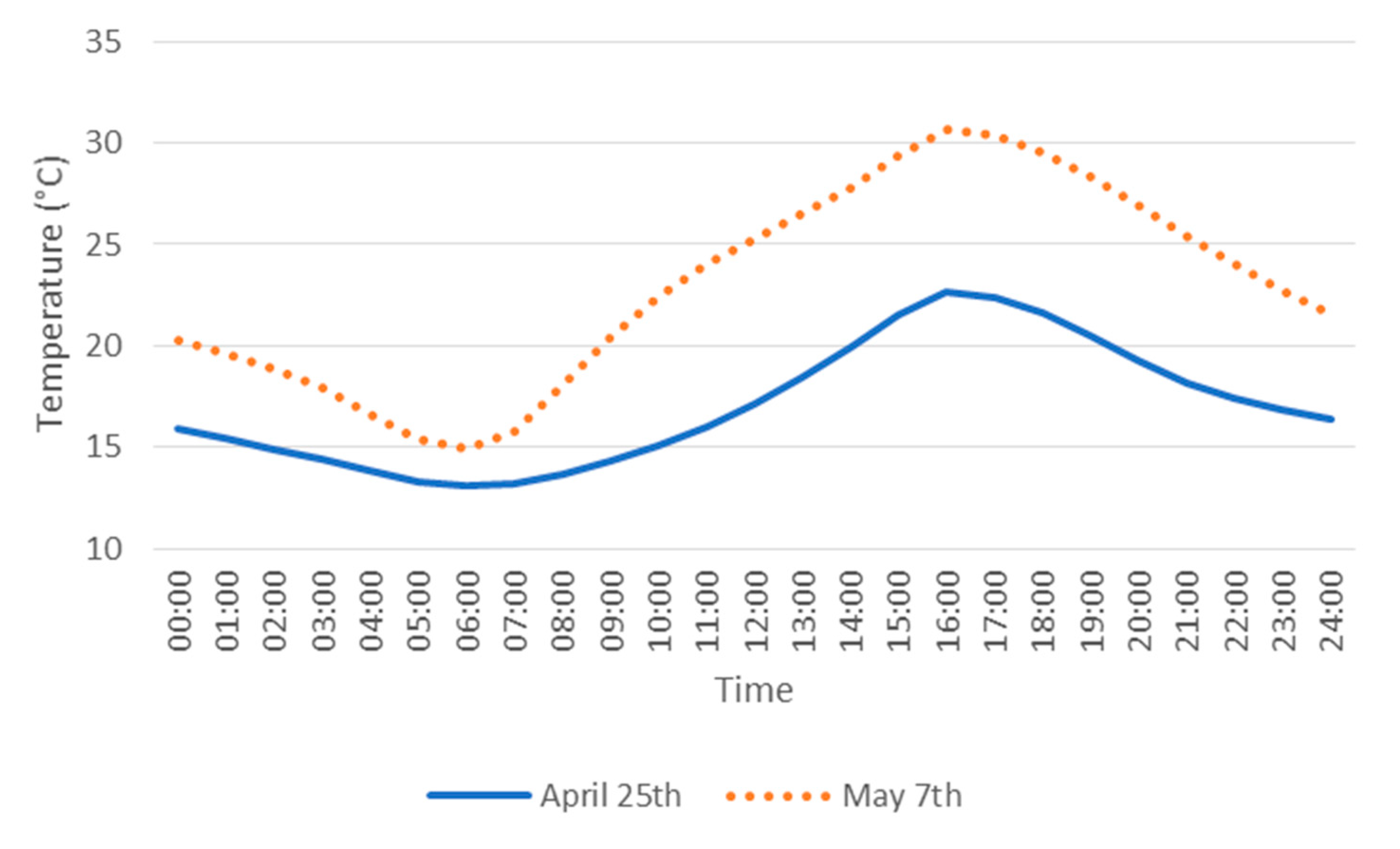
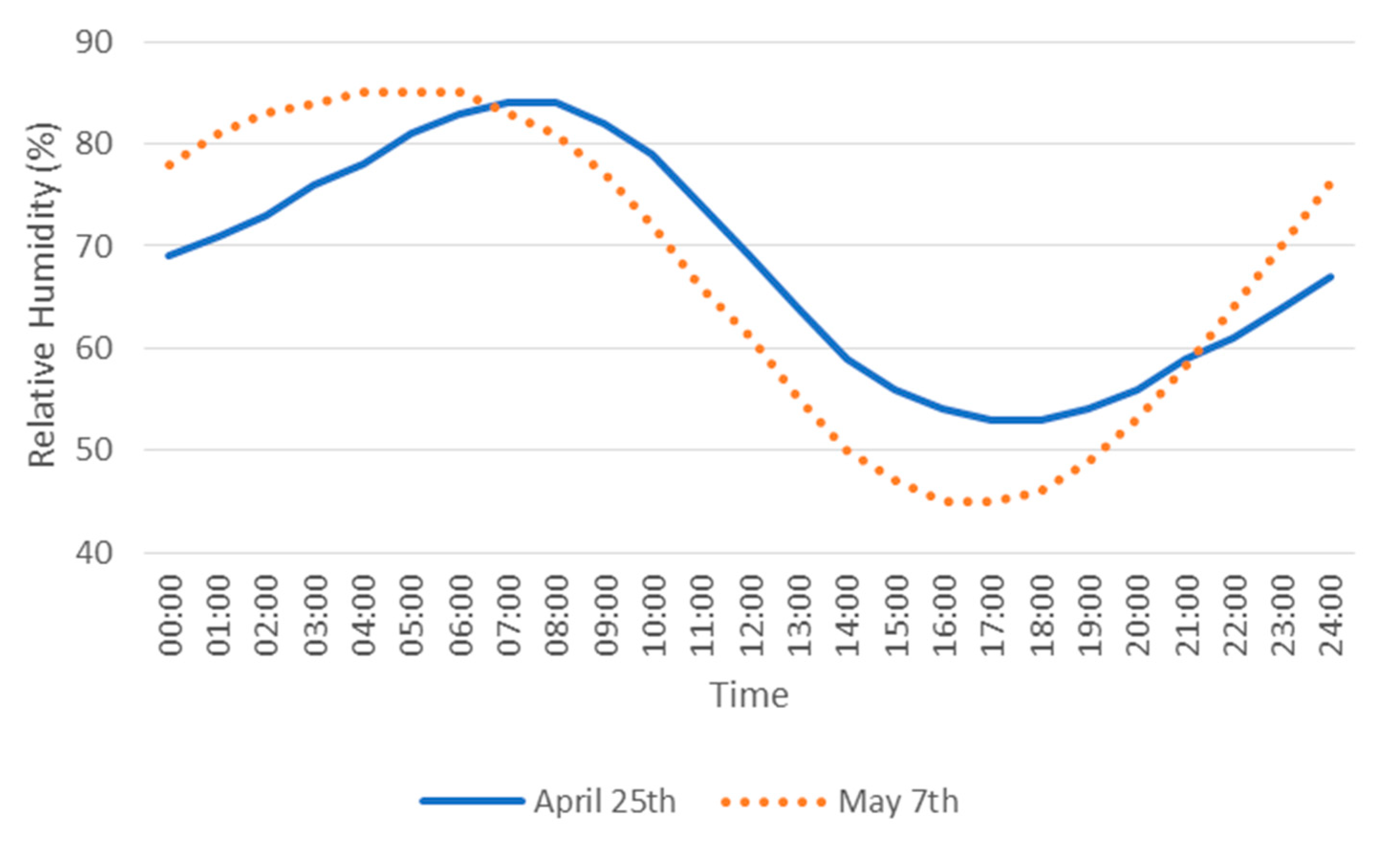
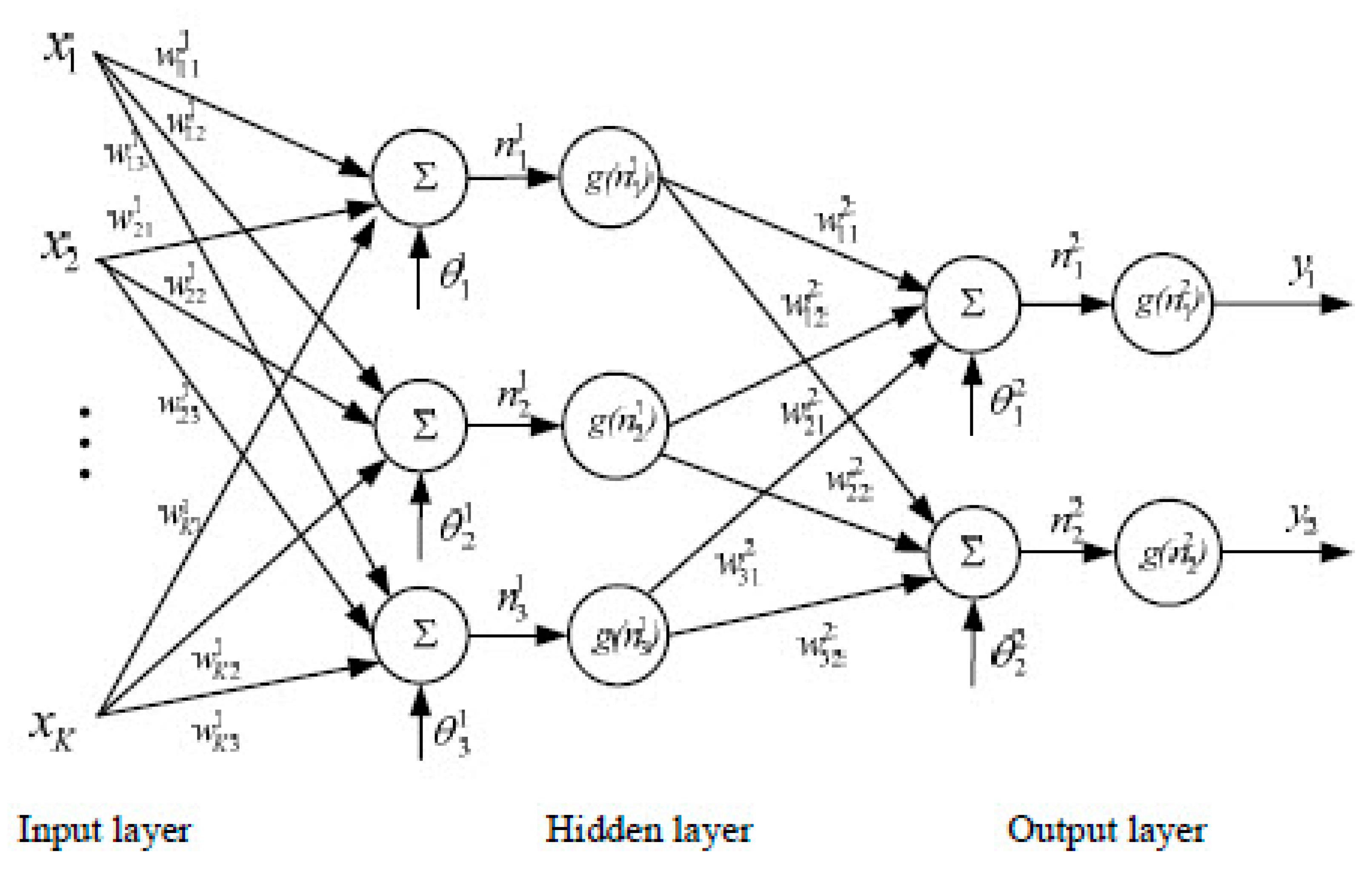

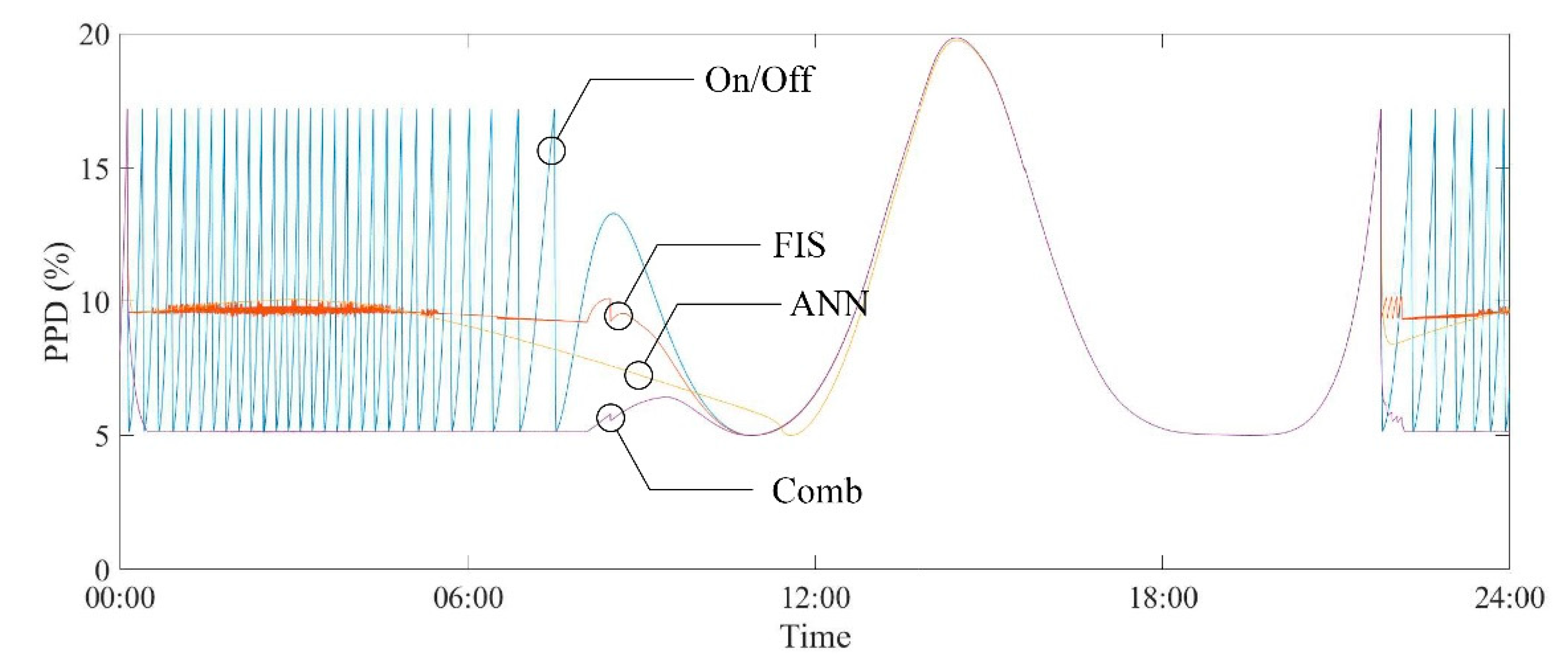
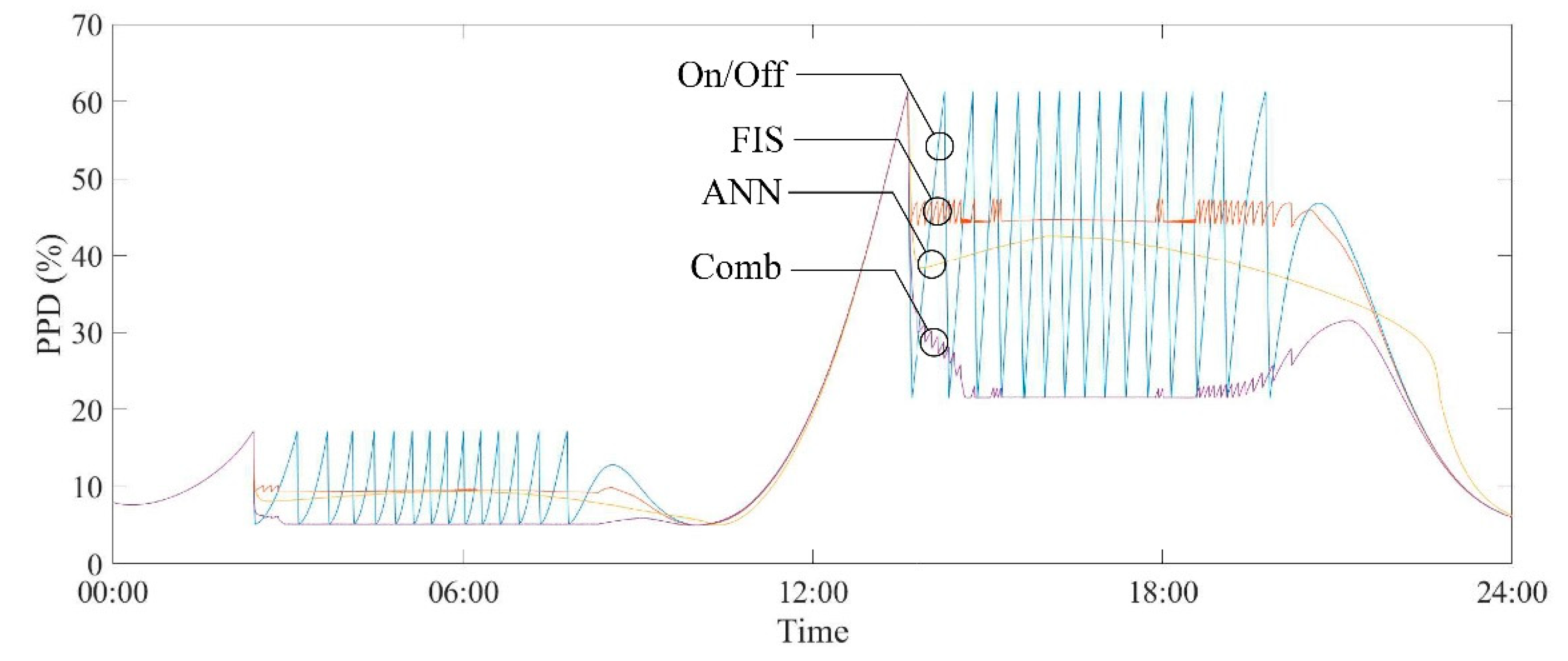



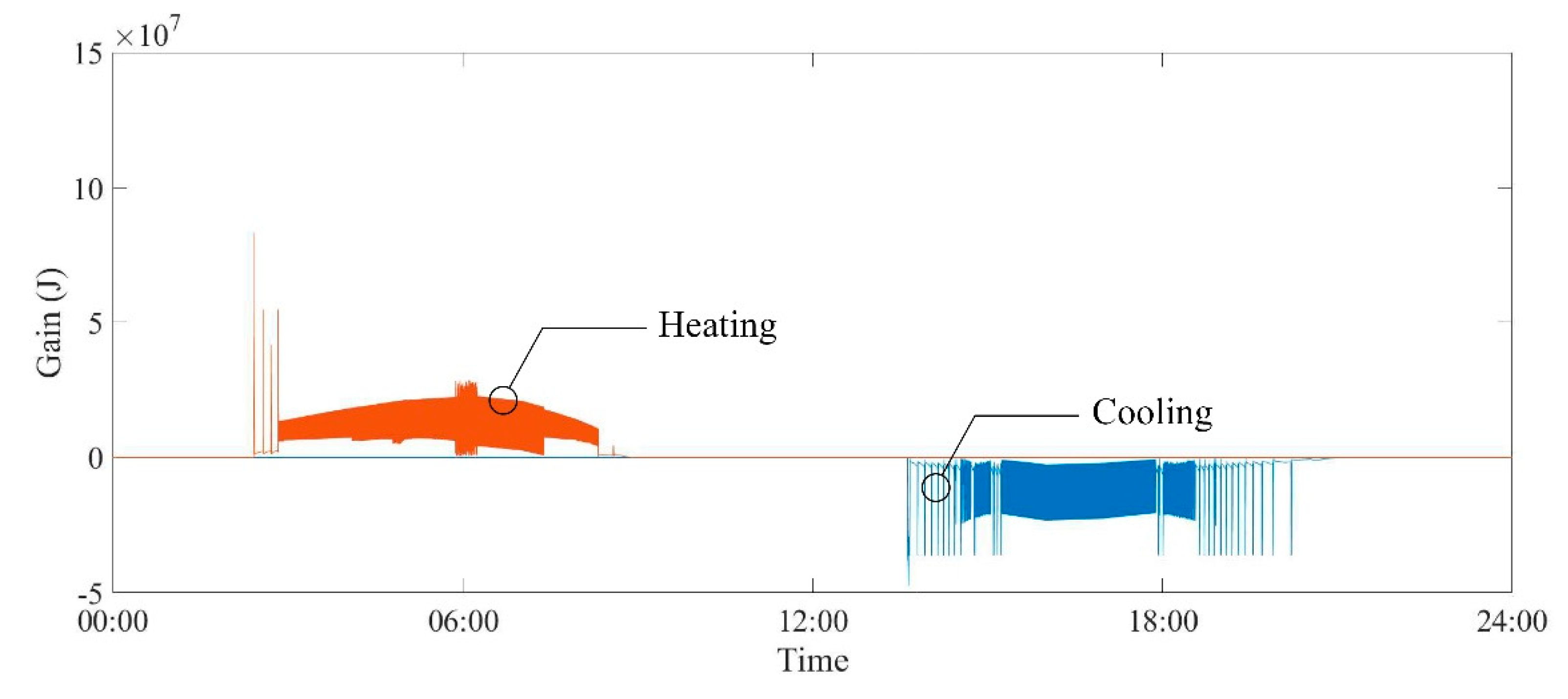
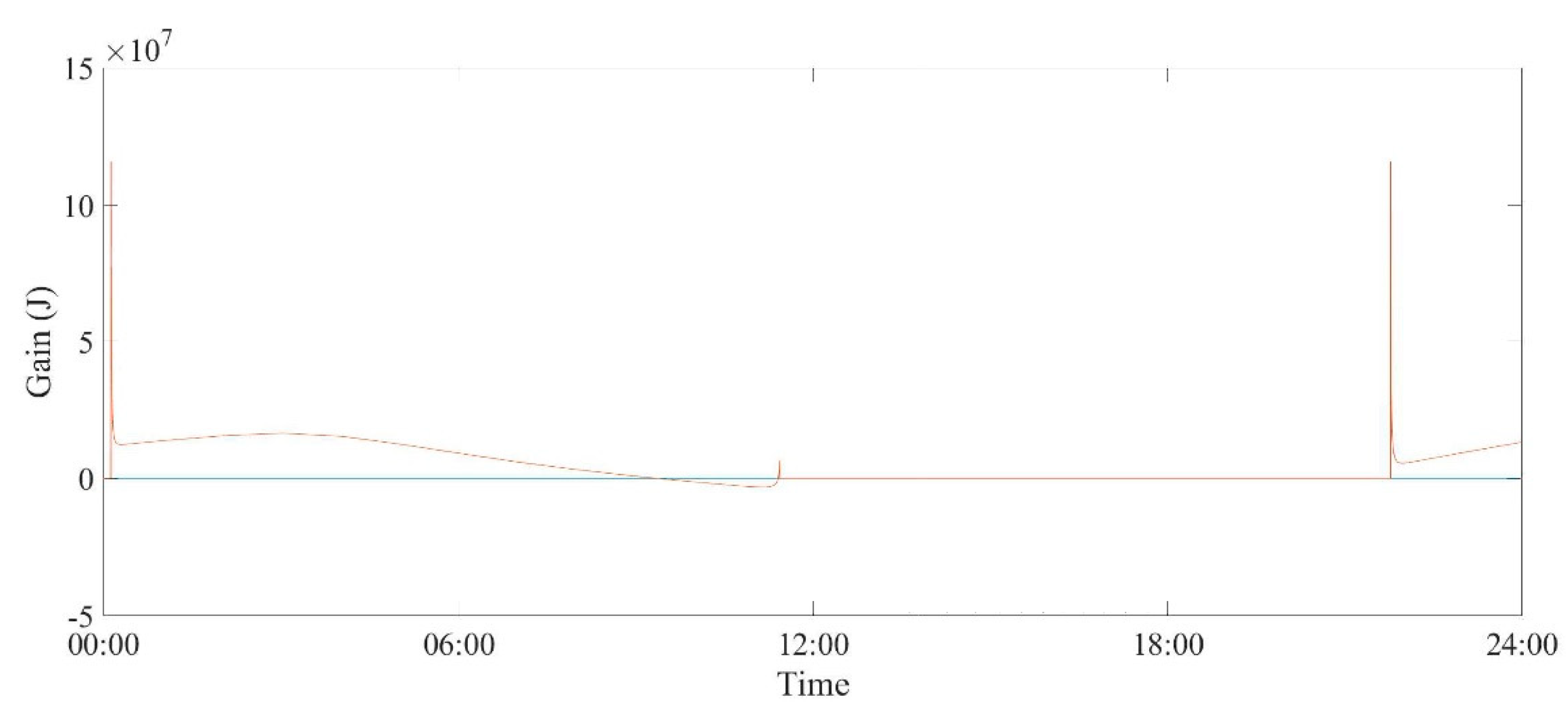
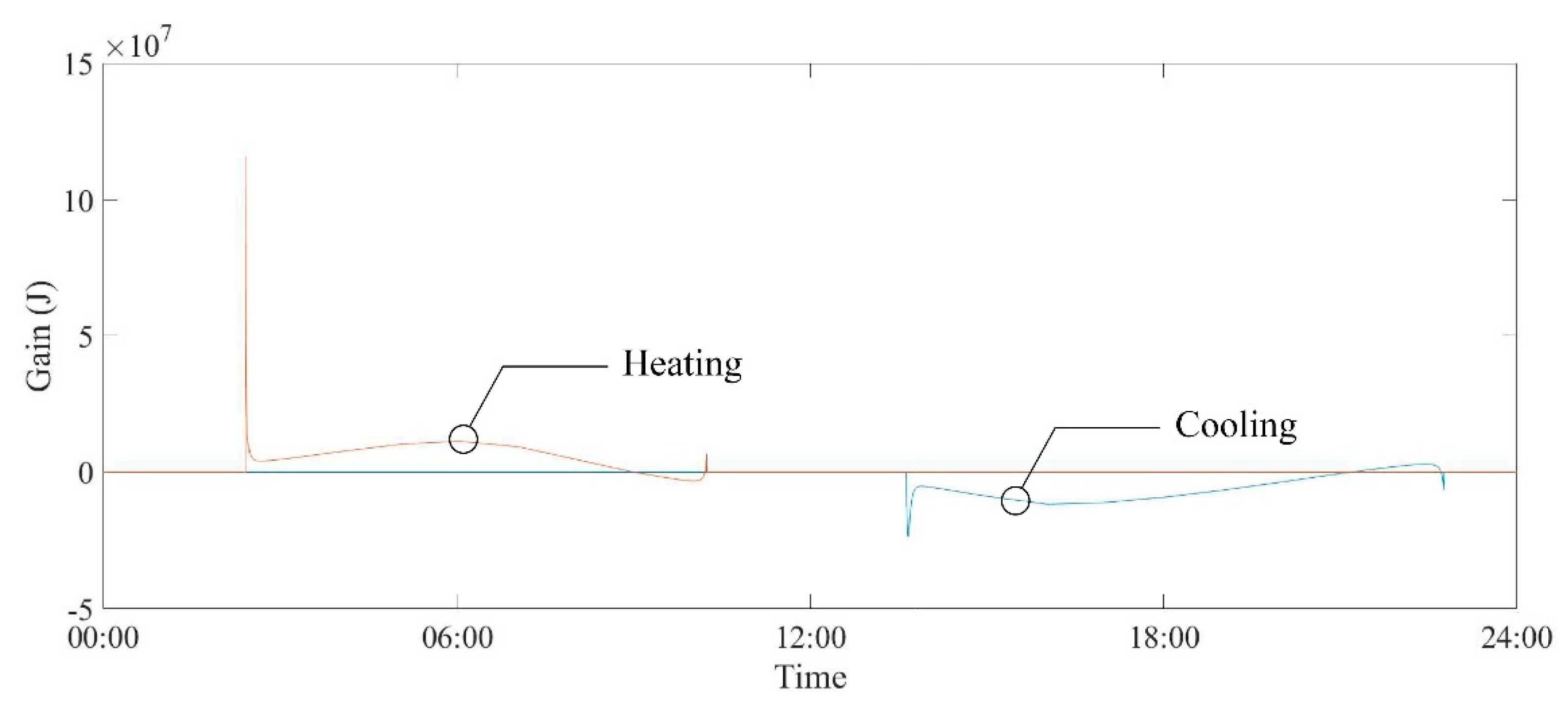
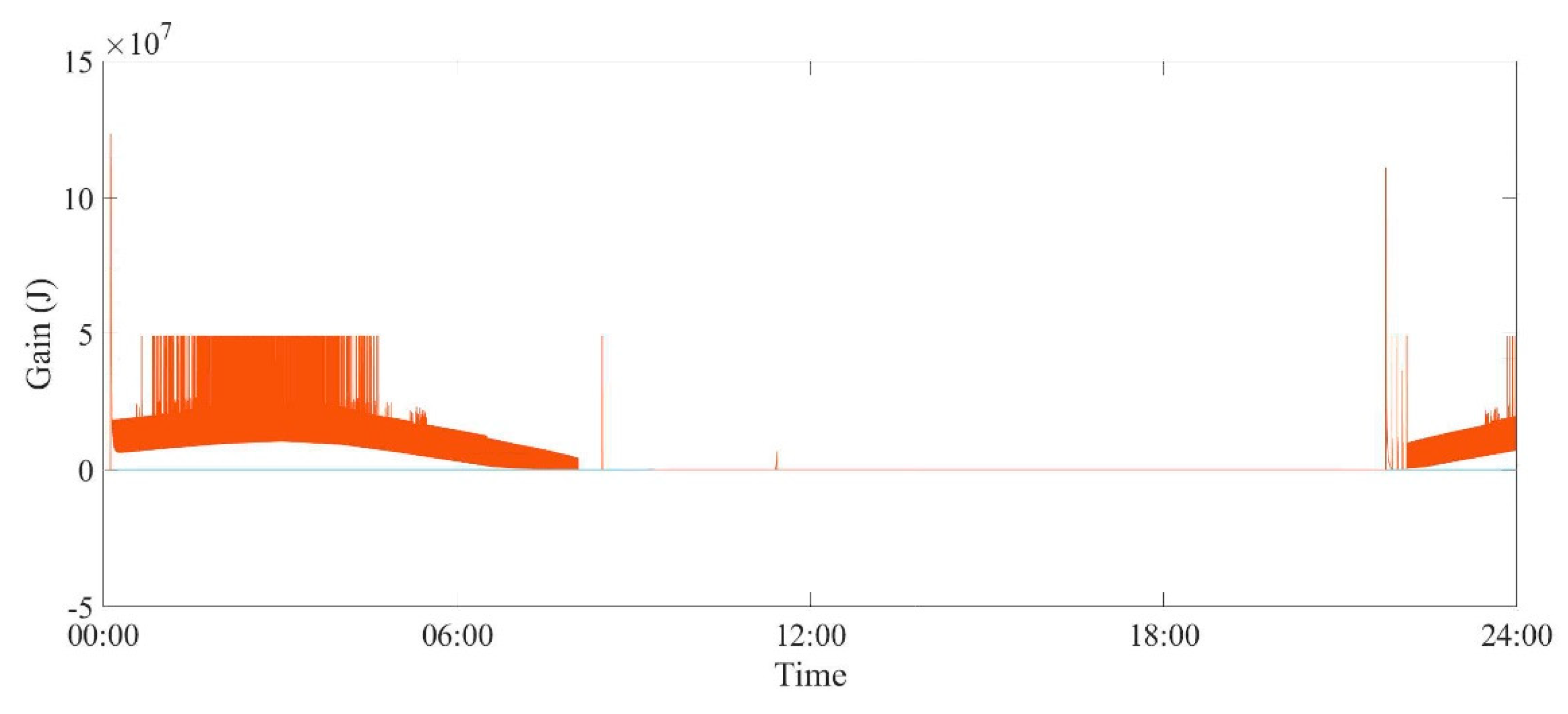

| No. | Design Parameter | Value |
|---|---|---|
| 1 | Set-point temperature (Tset) | 20.0 °C for heating/25.5 °C for cooling |
| 2 | Wall and Roof area (Awall) | 711.6 m2 |
| 3 | Wall thickness (Dwall) | 15 cm |
| 4 | Wall thermal conductivity (kwall) | 0.038 W*m−1*K−1 |
| 5 | Window area (Awindow) | 12 m2 |
| 6 | Window thickness (Dwindow) | 2 cm |
| 7 | Window thermal conductivity (kwindow) | 0.780 W*m−1*K−1 |
| 8 | Mass flow rate into room (ṁ) | 3600 kg*h−1 |
| 9 | Weather condition | Xuzhou, Jiangsu in China |
| No. | Criteria | On/Off | FIS | ANN | Comb. | ||||
|---|---|---|---|---|---|---|---|---|---|
| Norm. | Abnorm. | Norm. | Abnorm. | Norm. | Abnorm. | Norm. | Abnorm. | ||
| 1 | IAE for Tset | 3.89 | 4.96 | 3.26 | 5.10 | 2.64 | 1.93 | 0.39 | 1.50 |
| 2 | PPD (%) | 9.43 | 22.61 | 9.38 | 23.68 | 9.16 | 22.23 | 7.33 | 15.74 |
| (Unit: kWh/m2∙yr) | |||||||||
|---|---|---|---|---|---|---|---|---|---|
| No. | Energy Use Intensity | On/Off | FIS | ANN | Comb. | ||||
| Norm. | Abnorm. | Norm. | Abnorm. | Norm. | Abnorm. | Norm. | Abnorm. | ||
| 1 | for Cooling | 0.00 | 68.90 | 0.00 | 83.99 | 0.00 | 73.69 | 0.00 | 50.13 |
| 2 | for Heating | 150.07 | 59.87 | 230.03 | 102.04 | 151.91 | 63.76 | 130.45 | 53.25 |
| 3 | Total | 150.07 | 128.76 | 230.03 | 186.02 | 151.91 | 137.45 | 130.45 | 103.39 |
© 2020 by the authors. Licensee MDPI, Basel, Switzerland. This article is an open access article distributed under the terms and conditions of the Creative Commons Attribution (CC BY) license (http://creativecommons.org/licenses/by/4.0/).
Share and Cite
Sung, L.-Y.; Ahn, J. Comparative Analyses of Energy Efficiency between on-Demand and Predictive Controls for Buildings’ Indoor Thermal Environment. Energies 2020, 13, 1089. https://doi.org/10.3390/en13051089
Sung L-Y, Ahn J. Comparative Analyses of Energy Efficiency between on-Demand and Predictive Controls for Buildings’ Indoor Thermal Environment. Energies. 2020; 13(5):1089. https://doi.org/10.3390/en13051089
Chicago/Turabian StyleSung, Lee-Yong, and Jonghoon Ahn. 2020. "Comparative Analyses of Energy Efficiency between on-Demand and Predictive Controls for Buildings’ Indoor Thermal Environment" Energies 13, no. 5: 1089. https://doi.org/10.3390/en13051089




